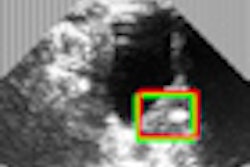Wednesday, November 30 | 3:40 p.m.-3:50 p.m. | SSM06-05 | Room E350
In this Wednesday afternoon session, a University of Washington team will highlight the benefits of a stenosis index for assessing arterial stenosis in hepatic allografts.Co-author Dr. Sherwin Chan, PhD, realized early in his residency that only one (peak-velocity) or two (resistive index, acceleration time) points in the spectral Doppler waveforms were being used to numerically assess arterial stenosis.
To improve the detection of stenoses, Chan developed a technique that uses all points of the waveform to detect stenosis quantitatively, calculated via a stenosis index. The method was tested in a pilot study using transplant hepatic arteries.
The team's stenosis index performed as well as studies in the literature for resistive index and peak velocity, Chan said.
"This is despite the fact that our method is handicapped because of the retrospective nature of the study (poor sampling rates and lack of information from the patients' celiac artery)," Chan noted.
The researchers have also garnered institutional review board approvals for studies in the native renal artery, transplant renal artery, and carotid artery and in cerebral vasospasm; data collection on these patient populations is under way, Chan said.
After their method is validated in a peer-reviewed journal, the group also plans to apply for funding for a prospective study in which the method can be tested against current approaches, Chan said.




















